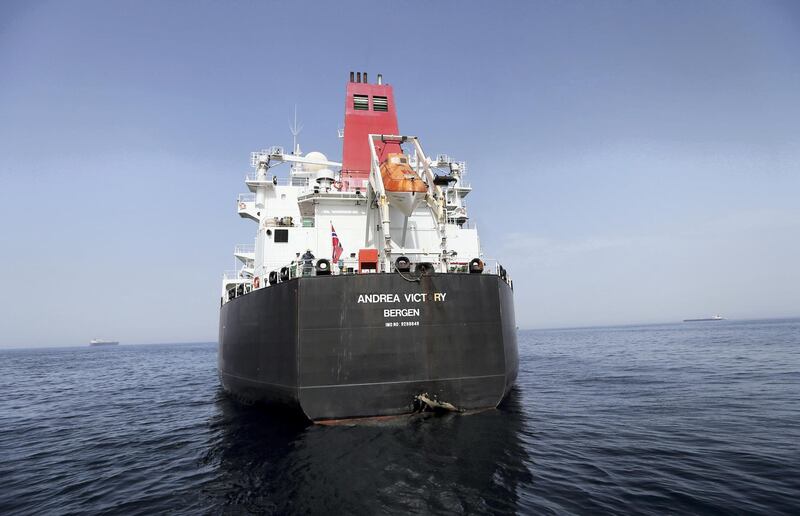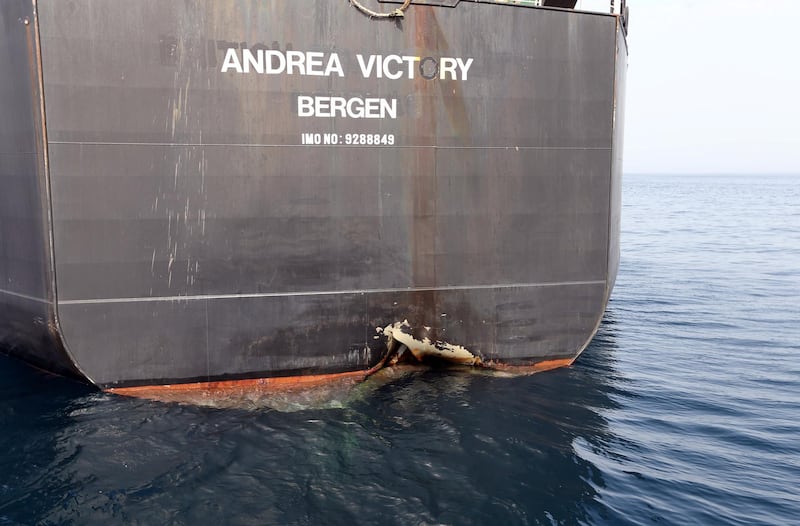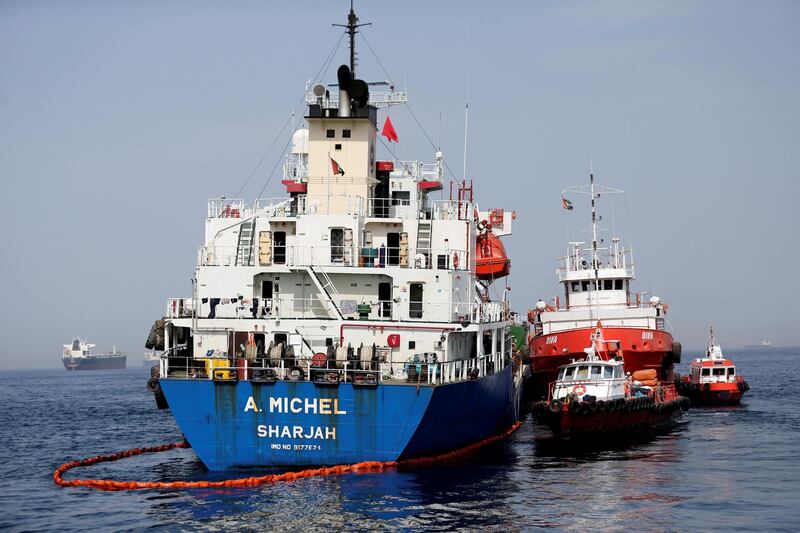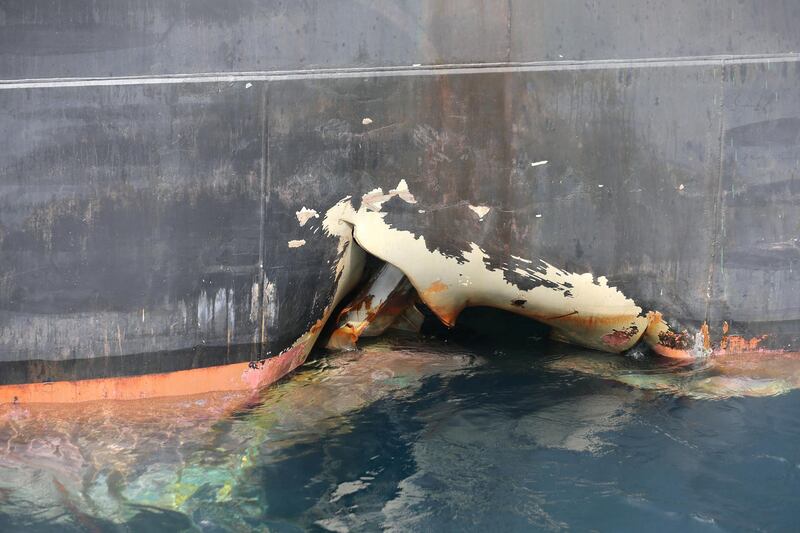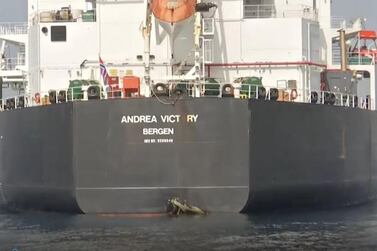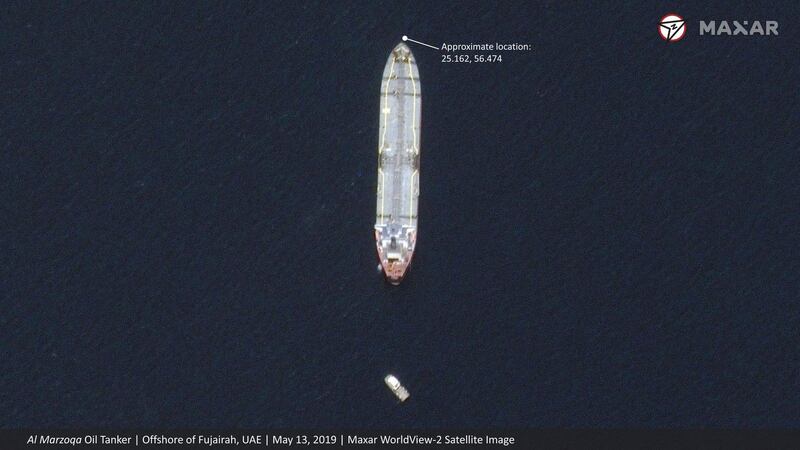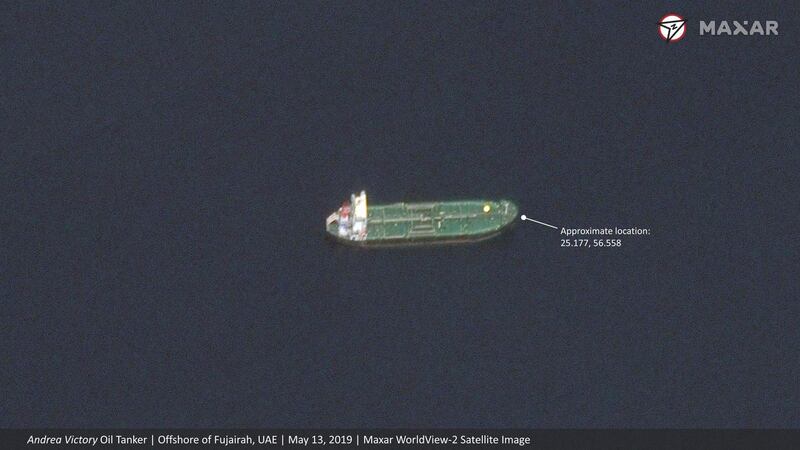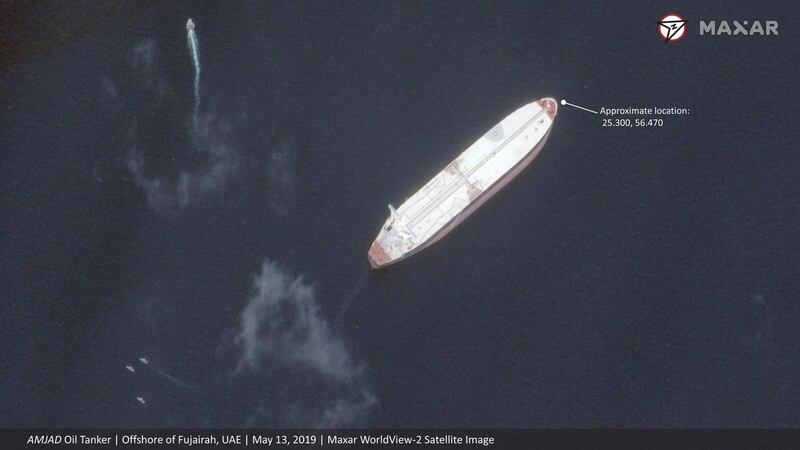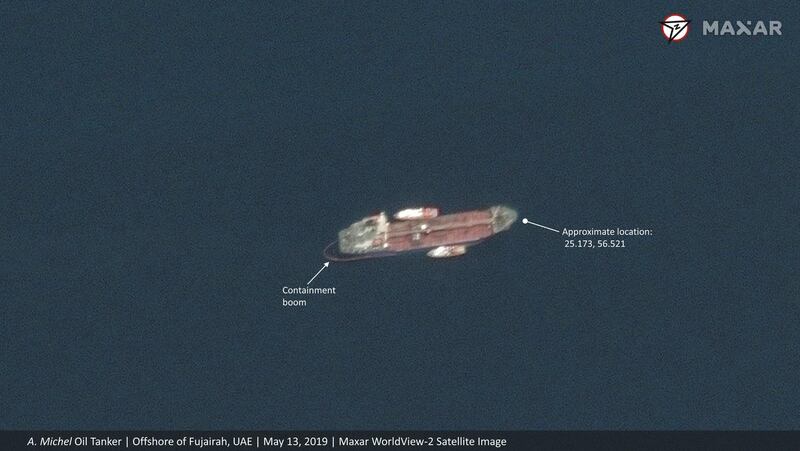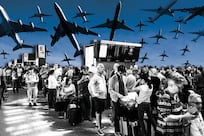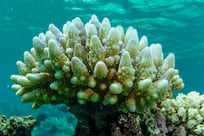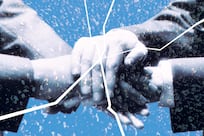Those responsible for the sabotage of ships off the coast of Fujairah must have had high levels of knowledge and resources to execute their mission successfully, experts believe.
The UAE said four vessels were targeted on Sunday. Saudi Arabia said two of its oil tankers were among those attacked, with one UAE-owned and the other ship Norwegian.
Analysts said investigators will be looking at who had the capabilities to strike, although they emphasised that the full facts were not yet known.
“A diver with a considerable degree of specialist training” may have placed an explosive on at least one of the ships, one analyst said, and several experts agreed that it was likely the attacker had planned to damage the vessels rather than sink them.
Neither the UAE nor Saudi Arabia has yet apportioned blame or identified suspects, with the incident still being investigated.
At least two ships had “holes in their sides due to the impact of a weapon” said Intertanko, an association of independent tanker owners.
Footage later emerged of a breach in the hull of the Andrea Victory, the Norwegian ship.
“None of the vessels have gone underwater, it’s just sabotage. This indicates to me that whoever did it either did not want to sink the vessels, or did not have the capabilities,” said Sayed Ghoneim, a retired general in the Egyptian military and now chairman of the Institute for Global Security and Defence Affairs, based in Abu Dhabi.
The tanker attacks could have been an attempt to embarrass the UAE, spread panic and send a message to the United States that its enemies are capable of easily attacking ships in the Gulf to deter it from expanding its presence, he said.
Other possibilities include that the attack was launched by terrorists allied to another state that wants to see an escalation in the regional conflict or a terrorist group acting independently, Mr Ghoneim said.
The incidents came at a time of rising tensions between Tehran and its Gulf rivals and the United States.
Iran is embroiled in an escalating war of words with the United States over sanctions and the US military’s presence in the region.
Tehran has denied responsibility, calling the incidents “worrysome and dreadful”, while a senior Iranian politician speculated that “saboteurs from a third country” may be behind them.
The sabotage operations were described as alarming by Gamal Fekry, the Egyptian managing director of MC Ship Management, and a sea captain for the past 42 years.
He said tight security procedures would have been in place on the ships, in line with international rules, and that a lookout should be on duty at all times. Anyone approaching would have been closely monitored, he said, meaning it would be difficult to avoid detection.
“It would have taken a highly trained individual to execute these acts, it would not have been possible by someone who may have had a grudge against the shipping company,” he said. “It looks like a clear and deliberate act, that is well planned and well executed beyond the capabilities of the crew on board the vessel.
“I have been in this industry for many years, and I would not have the capacity to dive underneath the vessel to place a device that would cause an explosion on the vessel.
“It obviously happened from the outside, below the water level beneath the ship. It was carefully planned and not random.
“This is very alarming and disturbing, and the UAE and Gulf states will take a strong position on this because it is vital for national security and economic prosperity. It could not have happened in a more secure place – Fujairah is known to be one of the best managed sea ports in the region.”
On Sunday, initial reports by Lebanese news outlet Al Mayadeen, which has links to Hezbollah and Tehran, wrongly claimed that a series of explosions had occurred in the port of Fujairah itself and that several tankers were in flames.
News outlets backed by Iran continued to spread disinformation on Monday with Press TV, an English-language channel, speculating that “dropping of bombs by US forces to ignite tensions in the region” may have been the cause of damage to the ships.
That no one had claimed responsibility was significant, said Ahmed Hassan, the founder of Grey Dynamics, a UK company that specialises in field intelligence.
He said he believed the attackers had deliberately not caused extensive damage, perhaps preferring to cause disruption or send a message.
“The attacker must have been fairly sophisticated to be able to do this, especially in a co-ordinated manner,” said Mr Hassan, who has been active in the intelligence and security sector in the Horn of Africa for eight years. “The Norwegian ship was damaged from the outside, although a torpedo would have caused much more damage. It could have been caused by some sort of projectile or submersible or a small explosive put on the hull while it was docked. Using a drone is more difficult due to sensors under water but not impossible.
“People outside the region will see this as an escalation. The maritime security sector will be looking at this, and definitely, people will be scratching their heads and wondering whether this is a credible threat going forward.”
A naval mine may have been responsible for the hole in the Norwegian tanker, Andrea Victory, said Peter Cook, director of PCA Maritime Ltd, a maritime consultancy.
“Mines are very easy and cheap to manufacture at $50 and easy to deploy from a boat or coastal vessel,” he said.
A spokesman for Dryad Global, a maritime risk management company, said it was likely that a skilled diver placed a mine on the Andrea Victory.
The peeling of the steel hull in an upward manner was in line with a detonation point below the waterline, he said.
“The blast pattern is small with little to no scorching. It is a realistic possibility that the munition used was a small device, potentially a diver or boat-placed mine designed to deny the mobility of the vessel rather than the destruction of the vessel or injury to crew,” the spokesman said.
“A device of this kind is likely to have a small blast radius and an explosive charge of around 1.8 kilograms, designed to pierce a steel hull rather than destroy the vessel.
“If the weapon used was confirmed to have been a mine then it is highly likely that this will have been placed by a diver with a considerable degree of specialist training.”
Additional reporting by Ramola Talwar Badam
